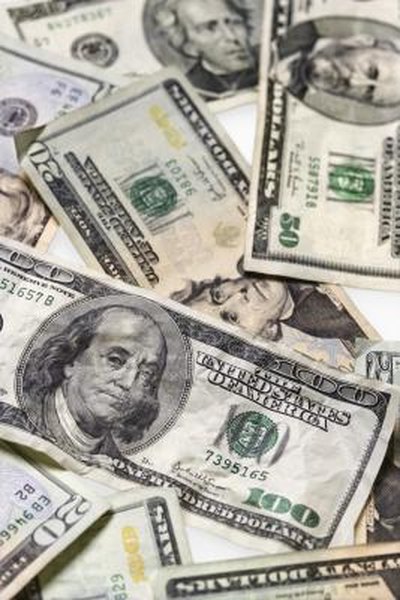How to Read a Forex Chart
Reading price charts is essential to successful currency trading.
Thinkstock/Comstock/Getty Images
The speculative buying and selling of currencies is known as the foreign exchange or Forex market. If you're considering a plunge into this market, first learn how to read a Forex chart, a graph showing the price activity of a specific currency pair. Forex charts can be scaled to match your trading time frame, whether it covers a few minutes or months. Although the basics of chart reading are straightforward, experienced traders can add several layers of indicators, and complexity, to the exercise.
Open your trading software and select a single price chart to read. Currency trading works in pairs, with one currency trading against another. To designate currencies, the system uses three-letter symbols: USD for the U.S. dollar, EUR for the euro, JPY for the Japanese yen and GBP for the British pound. The first member of the pair is the base currency, which is used to purchase units of the second or quote currency. The USD/JPY chart, for example, shows the amount of yen currently purchased by one U.S. dollar. EUR/USD shows the dollars that can be purchased with a single euro. Quotations go to four decimal places with the exception of USD/JPY, which is quoted to two decimal places.
Step 2Set your time scale, which is displayed on the chart's horizontal axis. You can calibrate these intervals from a year all the way down to a tick -- a price quote that changes with every trade -- but the most commonly used are daily and hourly charts. The time frame used depends largely on your preference as a trader; if you are a fast trader who closes positions in less than an hour, you would want to use 15- or five-minute charts. If you tend to trade and hold for long-term profits, daily or weekly charts would be more useful.
Step 3Watch the candlesticks -- the most common method of displaying price activity in a currency pair. For each time interval, a narrow, rectangular form appears, with stems or "wicks" appearing above and below the body of the form. The top stem reaches the high; the low stem shows the low. The body in most default displays is green if the price has risen from the previous close or red if the price has fallen. In a green candlestick, the top of the main body of the candle is the closing price, while the bottom is the open; in a red candlestick the opposite is true. The candlestick shows lots of information at a glance, and the study of candlestick charting is a useful science for currency traders.
Step 4Set technical indicators, which are vital to most currency trading systems. Technical indicators show the trends in the currency pair as measured by certain mathematical formulas. The most common are the simple moving average (SMA) and the exponential moving average (EMA), which show as solid lines following the general trend of the price. Some indicators show on the price chart itself, while others appear in a separate chart showing below the main chart. Online charting software allows you to set the parameters for each indicator, making it more or less sensitive to the constant price fluctuations in the pair. Experiment by applying and calibrating the technical indicators to your price chart.
References
Tips
- Most Forex trading platforms will allow you to "practice trade" using virtual money, which allows you to develop your own system, using price trends and technical indicators, for trading currencies. Don't put real money into the currency markets until you feel comfortable with your trading system.
Warnings
- Be aware of the many factors affecting the price trends in currencies. Although many traders work off purely technical systems, take into account fundamentals such as economic news, trade balances, interest and inflation rates and fiscal policy by foreign governments. Without a good grasp of fundamentals, it's difficult to prepare yourself for the often wild price swings in the currency market.
Writer Bio
Founder/president of the innovative reference publisher The Archive LLC, Tom Streissguth has been a self-employed business owner, independent bookseller and freelance author in the school/library market. Holding a bachelor's degree from Yale, Streissguth has published more than 100 works of history, biography, current affairs and geography for young readers.

